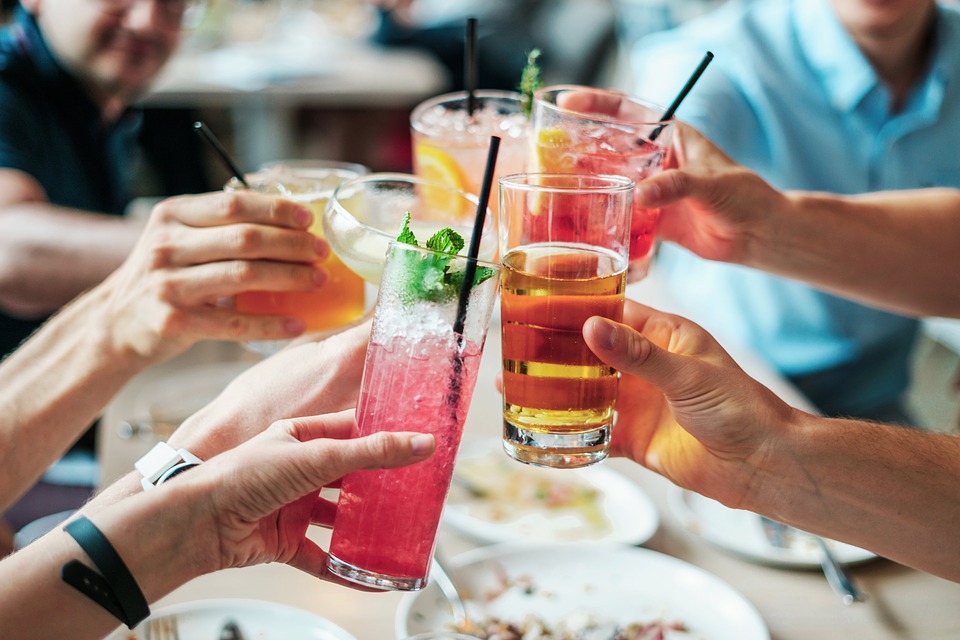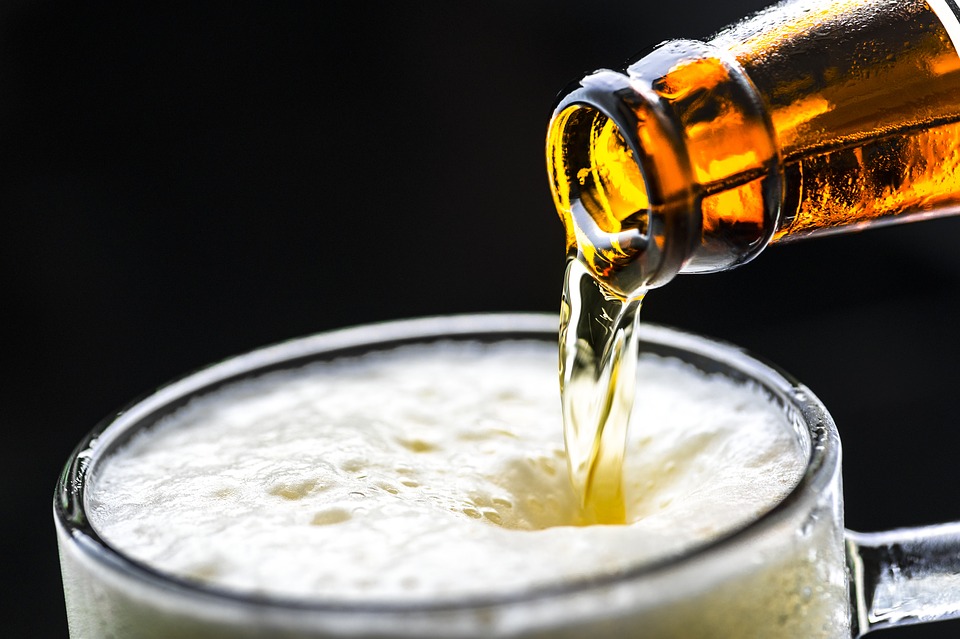Responsibly Serving Alcohol at Parties

Summer offers lots of reasons to celebrate – end of school years and graduations, Canada Day and long weekends, and great weather which all provide a great opportunity to get friends and family together for a pool party or backyard barbeque. If you’re hosting a party this summer (or at any time of year!) which will have alcohol served, be sure to think ahead and have a plan in place to ensure the safety of your guests while they are at your event as well as after they leave. The larger the event, the more difficult it can be to monitor how much your guests have had to drink, but as a host you must take the responsibility for not overserving your guests to a point where they or the public may be in harm’s way once they leave. So what can you do to help minimize the risk of something happening to your guests who have been drinking, especially for guests that may have had too much to drink? – Ask your guests upon arrival whether they plan to drive or if they are a designated driver. This allows you to keep an eye on the designated drivers to ensure they aren’t drinking, or are not drinking enough to have their ability to drive at the end of the event impaired. – Ensure you have a number of non-alcoholic beverage choices for designated drivers, but also for those drinking to have to break up their speed of consumption. An hour or two before you expect guests to begin leaving you can also limit or stop serving alcohol, although this won’t sober up those who have been drinking throughout the event, it will stop any further intoxication leading up to their departure. – If someone who expected to drive home is not in a state to drive, have cash on hand to call a cab, use a ride-sharing app, or have a couch or extra bed for them to sleep on. – Have food available to guests throughout your event, and consider offering up some food before pouring or serving alcoholic drinks. The effects of drinking can be reduced from hitting as intensely if drinking begins after food has been eaten. Eating after drinking has begun does not help. – Include information for any public transit routes which are in the immediate area of the event address so guests can plan to use public transit to get to the party and either take public transit, a cab or ride-sharing service home at the end of the event. These are only a few examples of ways you can prevent your party guests from overdrinking and driving at your event, but the best way to prevent impaired driving is to not drive if you plan to drink at all. While you may know the legal blood alcohol concentration (BAC) for fully licensed drivers over the age of 21 is 80 milligrams of alcohol in 100 millilitres of blood (0.08), and is a criminal offence with severe penalties without factoring in the possibility of causing an accident causing damages, injury or death, you may not realize how the human body is affected even with lower a BAC which many often shrug off as being a fine state to drive in. Although the amount of alcohol required to become impaired differs according to how fast you drink, your weight, your gender, and how much food you have in your stomach, you might be surprised what is considered a standard drink, and how even a 0.02 BAC (which can be reached after only a few drinks for some people), can begin to affect your body.

A “standard” drink or serving contains 13.5 grams of alcohol. That means one “standard” drink or serving of beer is 341 ml (12 oz.), 148 ml (5 oz.) of wine, or a 44 ml (1.5 oz.) shot of spirits. When you consider the breakdown of what is considered a serving, you’ll soon realize that many drinks served are over just one 13.5 gram serving but are often being counted by those consuming it as just a single drink. Alcohol affects everyone differently and there are many factors that contribute to your BAC level, but to give an idea of the affects a 0.02, 0.05 and a 0.08 BAC have on your body we’ve included them below.
0.02 BAC Typical Effects include: Some loss of judgment, relaxation, slight body warmth and altered mood Predictable Effects on Driving include: Decline in visual functions (rapid tracking of a moving target), and decline in ability to perform two tasks at the same time (divided attention)
0.05 BAC Typical Effects include: Exaggerated behavior, may have loss of small-muscle control (focusing your eyes), impaired judgement, usually good feeling, lowered alertness and release of inhibition. Predictable Effects on Driving include: Reduced coordination, reduced ability to track moving objects, difficulty steering, and reduced response to emergency driving situations.
0.08 BAC Typical Effects include: Muscle coordination becomes poor (balance, speech, vision, reaction time, and hearing), harder to detect danger, judgement, self-control, reasoning, and memory are impaired. Predictable Effects on Driving include: Concentration, short-term memory loss, speed control, reduced information processing capability (signal detection, visual search), and impaired perception. Please drink responsibly this holiday long weekend. And if you plan to drink, plan not to drive!


 A “standard” drink or serving contains 13.5 grams of alcohol. That means one “standard” drink or serving of beer is 341 ml (12 oz.), 148 ml (5 oz.) of wine, or a 44 ml (1.5 oz.) shot of spirits. When you consider the breakdown of what is considered a serving, you’ll soon realize that many drinks served are over just one 13.5 gram serving but are often being counted by those consuming it as just a single drink. Alcohol affects everyone differently and there are many factors that contribute to your BAC level, but to give an idea of the affects a 0.02, 0.05 and a 0.08 BAC have on your body we’ve included them below. 0.02 BAC Typical Effects include: Some loss of judgment, relaxation, slight body warmth and altered mood Predictable Effects on Driving include: Decline in visual functions (rapid tracking of a moving target), and decline in ability to perform two tasks at the same time (divided attention) 0.05 BAC Typical Effects include: Exaggerated behavior, may have loss of small-muscle control (focusing your eyes), impaired judgement, usually good feeling, lowered alertness and release of inhibition. Predictable Effects on Driving include: Reduced coordination, reduced ability to track moving objects, difficulty steering, and reduced response to emergency driving situations. 0.08 BAC Typical Effects include: Muscle coordination becomes poor (balance, speech, vision, reaction time, and hearing), harder to detect danger, judgement, self-control, reasoning, and memory are impaired. Predictable Effects on Driving include: Concentration, short-term memory loss, speed control, reduced information processing capability (signal detection, visual search), and impaired perception. Please drink responsibly this holiday long weekend. And if you plan to drink, plan not to drive!
A “standard” drink or serving contains 13.5 grams of alcohol. That means one “standard” drink or serving of beer is 341 ml (12 oz.), 148 ml (5 oz.) of wine, or a 44 ml (1.5 oz.) shot of spirits. When you consider the breakdown of what is considered a serving, you’ll soon realize that many drinks served are over just one 13.5 gram serving but are often being counted by those consuming it as just a single drink. Alcohol affects everyone differently and there are many factors that contribute to your BAC level, but to give an idea of the affects a 0.02, 0.05 and a 0.08 BAC have on your body we’ve included them below. 0.02 BAC Typical Effects include: Some loss of judgment, relaxation, slight body warmth and altered mood Predictable Effects on Driving include: Decline in visual functions (rapid tracking of a moving target), and decline in ability to perform two tasks at the same time (divided attention) 0.05 BAC Typical Effects include: Exaggerated behavior, may have loss of small-muscle control (focusing your eyes), impaired judgement, usually good feeling, lowered alertness and release of inhibition. Predictable Effects on Driving include: Reduced coordination, reduced ability to track moving objects, difficulty steering, and reduced response to emergency driving situations. 0.08 BAC Typical Effects include: Muscle coordination becomes poor (balance, speech, vision, reaction time, and hearing), harder to detect danger, judgement, self-control, reasoning, and memory are impaired. Predictable Effects on Driving include: Concentration, short-term memory loss, speed control, reduced information processing capability (signal detection, visual search), and impaired perception. Please drink responsibly this holiday long weekend. And if you plan to drink, plan not to drive!
